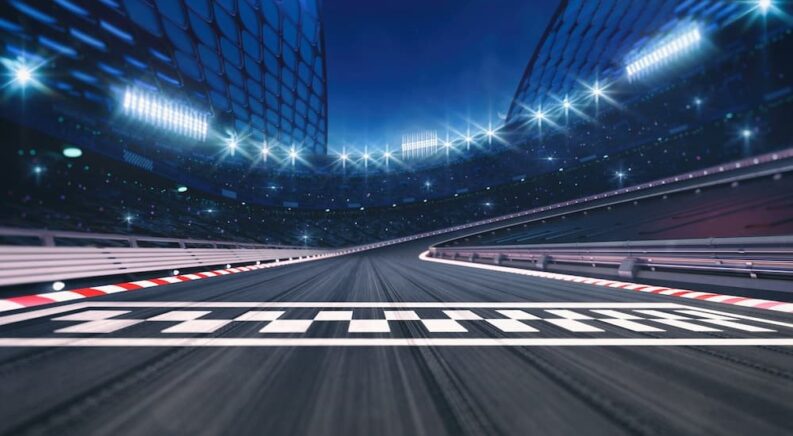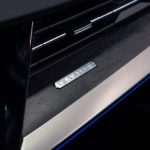Monza, Spa, Monaco. These names are music to the ears of any gearhead, conjuring images of tight chicanes, hairpin turns, and long straights suffused with the nose-tingling scent of high-octane fuel. These famous racetracks are among the world’s most iconic; monuments to the world of motorsport that, for at least one weekend every year, become the center of the racing universe. Few non-professional drivers will ever get the chance to navigate many of these hallowed tracks—with one major exception—but that hasn’t stopped them from garnering their own cult following, with fans memorizing every turn and even getting their outlines permanently inked onto their bodies. Rich with history, these courses serve as the high-speed proving ground for the racing elite, separating the truly talented from the merely speedy with their grueling layouts and technical features. Read on as we give you a quick lap around some of the most beloved tracks across the globe. From “The Temple of Speed” to “The Green Hell” and more, we’ll take a quick look at each course’s history, hallmarks, and importance in the modern racing scene.
Circuit de Spa-Francorchamps
Location: Stavelot, Belgium
Length: 4.3 miles
Fastest Lap: 1:41.25 (Lewis Hamilton)
Iconic Corner: Eau Rouge
Located in Belgium’s Ardennes Forest, Circuit de Spa-Francorchamps—or just “Spa” for those in the know—is consistently ranked as one of the world’s most beautiful racetracks. Set amid rolling hills and dense stands of fir trees, it’s hard to deny the track’s appeal, though most visitors aren’t there for the vistas. Originally built for motorcycle racing, the 4.3-mile course was once much longer, only shortened from a mammoth 8.7 miles to its current length in 1979 amid safety concerns.
Home of the Belgium Grand Prix and a mainstay on the F1 circuit since 1983, Spa also hosts the 24 Hours of Spa and the World Endurance Championship 6 Hours of Spa-Francorchamps. Spa has been home to its fair share of iconic moments in motorsports over the years. The course is noted for the challenging Eau Rouge/Raidillon combination, a tricky section of track where racers speed down a straight to the point, crossing the Eau Rouge River before quickly climbing a hill to encounter a series of corners and, ultimately, a blind summit. The combination can be tricky to navigate, requiring exemplary skill and bravery from drivers who typically take the corner at a speed of 190 mph in an F1 car.
“From the cockpit, you cannot see the exit, and as you come over the crest, you don’t know where you will land,” said two-time F1 World Champion Fernando Alonso. “It is a crucial corner for the timed lap, and also in the race, because you have a long uphill straight afterwards where you can lose a lot of time if you make a mistake. It is very strange, but good fun as well.”
Nürburgring Nordschleife
Location: Nürburg, Germany
Length: 12.9 miles
Fastest Lap: 5:19.55 (Timo Bernhard)
Iconic Corner: Caracciola-Karussell
Consisting of 154 corners spread over almost 13 miles, Nürburgring Nordschleife didn’t earn the nickname “The Green Hell” for nothing. Located in the Eifel mountains and boasting a medieval hilltop castle, the Nordschleife (or “North Course”) is just one part of a vast motorsports complex with a capacity of more than 150,000. The course plays with elevation to a degree few other tracks can match, with racers experiencing more than 1,000 ft of elevation change over the 20-kilometer route.
Home to many top-tier international races—including the storied 24 Hours of Nürburgring endurance race—the course is unique in that it’s also open to the public. Technically classified as a public road, drivers only need a valid driver’s license, proof of insurance, and a lap ticket to try their hand at one of the world’s most famous courses. The Nordschleife has become the go-to destination for those looking to test their automotive mettle, from casual auto enthusiasts to some of the world’s biggest automakers who flock to the German countryside to put their newest models to the test. The current record is held by Timo Bernhard, who completed “The Ring” in a blazing 5:19.55 behind the wheel of a Porsche 919 Hybrid Evo, though even some of the world’s best drivers struggle to post a lap time under seven minutes.
While it’s tough to pick a favorite corner from the Nordschleife’s generous allotment, the Carraciola-Karussell tends to top the list. The hairpin turn, named after German driver Rudolf Caracciola and the German word for ‘carousel,’ features a steep banking that exerts considerable G-forces on both car and driver. These forces are prone to spitting a car so swiftly out of the turn that it can move sideways, hence its carousel-inspired nickname.
Autodromo Nazionale di Monza
Location: Monza, Italy
Length: 3.6 miles
Fastest Lap: 1:18.89 (Lewis Hamilton)
Iconic Corner: Parabolica
Hairpin turns and elevation changes might make for good racing, but if you’re looking to see a high-performance car pushed to its limits, there’s no beating Italy’s Autodromo Nazionale di Monza. Consisting of long straights with a few tight chicanes thrown into the mix for variety, Monza is unique on the F1 circuit in that drivers will typically spend as much as 80 percent of a race at full throttle. Every good track needs a nickname, and Monza certainly lives up to its “Temple of Speed” moniker with racers often hitting speeds of 200 mph at least four times in a typical lap. While speed has been one of the course’s hallmarks, it’s also been something of a liability, with Monza consistently ranking as one of the world’s most dangerous courses. Since the track’s conception, 52 drivers and 35 spectators have lost their lives, leading designers to continually modify the track to improve spectator safety and reduce speed on the curves.
The course is also awash in history and has the distinction of being the world’s third-oldest purpose-built motor racing circuit, behind England’s Brooklands and the Indianapolis Motor Speedway. Built by 3,500 workers hired by the Milan Automobile Club in 1922, the track was officially opened on September third and held its first Italian Grand Prix one week later. The track has been the exclusive home of the Italian Grand Prix since 1949, and it is one of the most highly anticipated stops on the F1 circuit. The Italian woodland course provides the perfect place for Italian brands to showcase the latest and greatest in automotive engineering, and Ferrari fans the world over have made the course a regular pilgrimage destination.
Given its straightforward layout, Monza’s most iconic turn is a little less complicated than most on the international motorsports circuit, but that’s not to say the Curva Parabolica is easy. Given the high speeds that can be reached on the course, even the relatively basic turn can be a challenge when you’re entering at over 200 mph. As the last turn before the finish line, the Curva Parabolica provides the perfect overtaking opportunity for those who aren’t afraid to push their limits. This legendary right hand turn has spelled an early exit for plenty of overambitious racers over the years, many of whom found themselves pelted with gravel in the run-off zone after a braking miscalculation—although designers did replace the gravel bed with an asphalt run-off zone in 2014 to improve safety. The turn was renamed the Curva Alboreto in 2021 in honor of Italian F1 legend Michele Alboreto, but any true racing fan will know what you mean when you reference the Parabolica.
Circuit de Monaco
Location: Monte Carlo, Monaco
Length: 2.07 miles
Fastest Lap: 1:10.16 (Lewis Hamilton)
Iconic Corner: Grand Hotel hairpin
The Monaco Grand Prix is a perennial highlight on the Formula 1 calendar. Set in the ultra-luxe port of Monte Carlo, the Monaco Grand Prix is about as far from Monza’s purpose-built racing circuit as you can get. The two-mile Circuit de Monaco is a true city course, with regular, everyday streets transformed into a venue for high-stakes motorsport thanks to a generous deployment of barriers and stands that take around six weeks to set up. First added to the F1 calendar in 1950, the Circuit de Monaco is consistently cited as one of the sport’s most difficult courses, with tight, technical turns abound. “It’s like riding a bicycle around a living room,” said Brazilian driver Nelson Piquet.
Unlike some F1 courses—especially more straightforward tracks where pure speed is the name of the game—the Circuit de Monaco is a true test of a driver’s technical skill. With few straightaways, plenty of tight turns, and sudden elevation changes, this track will quickly separate the wheat from the chaff. An average driver with a well-engineered car might get lucky on a good day at a course like Monza, but the Circuit de Monaco is much more about prowess than power. Overtaking is rare, making a driver’s qualifying round and pit stops especially important factors on this course. Case in point: at the 2021 Monaco Grand Prix, there was only a single overtake in the 78-lap race.
The course has changed little since the first races were run back in the late 1920s, allowing drivers the stability to memorize each twist and turn of the short, precise course. While high-level motorsports like F1 have long been a favorite of monied jet-setters, Monaco is a scene all its own. The Grand Prix draws a unique crowd that’s often just as concerned with rubbing shoulders and hitting the nightclubs as they are with the race itself, creating a one-of-a-kind spectacle that few other courses can replicate. It’s like the Cannes or Sundance of the racing world, where racing almost plays second fiddle to the background festivities.
The Monaco Grand Prix is rich with memorable turns—from Swimming Pool to Casino, La Rascasse, Mirabeau, and more—but if there’s one feature that truly defines the Circuit de Monaco’s highly technical nature, it’s the Grand Hotel hairpin. Located at the end of a steep downhill section, the Grand Hotel bend forces drivers to make a full 180-degree turn, precariously balancing their control between the brakes, accelerator, and steering wheel while avoiding dangerously close competitors. The Grand Hotel hairpin is often navigated at lower speeds, but it is notable for being the only turn on the course that forces a driver to actually change their hand position on the steering wheel to master the angle. Many a race has been won or lost on the Grand Hotel hairpin, and this feature certainly haunts the dreams of some of the Grand Prix’s second-place finishers.
The Last Lap
From the mountains of Germany to the shores of the Mediterranean, these famous racetracks have etched their names in the world of motorsports. Treated with a reverence that the average American sports fan might reserve for Fenway Park, Lambeau Field, or Madison Square Garden, these courses are where dreams are made—or shattered. If you’ve got the frequent flier miles to spare, we couldn’t recommend a visit to one of these world-class racetracks strongly enough. When a top-tier motorsport league like Formula 1 is in town, these courses take on an almost festival-like atmosphere, guaranteeing a weekend of high-speed antics sure to appeal to any racing fan. For those looking to experience the thrill a little closer to home, televised motorsport coverage and video games give the average driver a chance to experience all the fun of racing culture without inhaling nearly as many fumes. No matter which option you choose, these four courses should be near the top of any racing fan’s bucket list.




